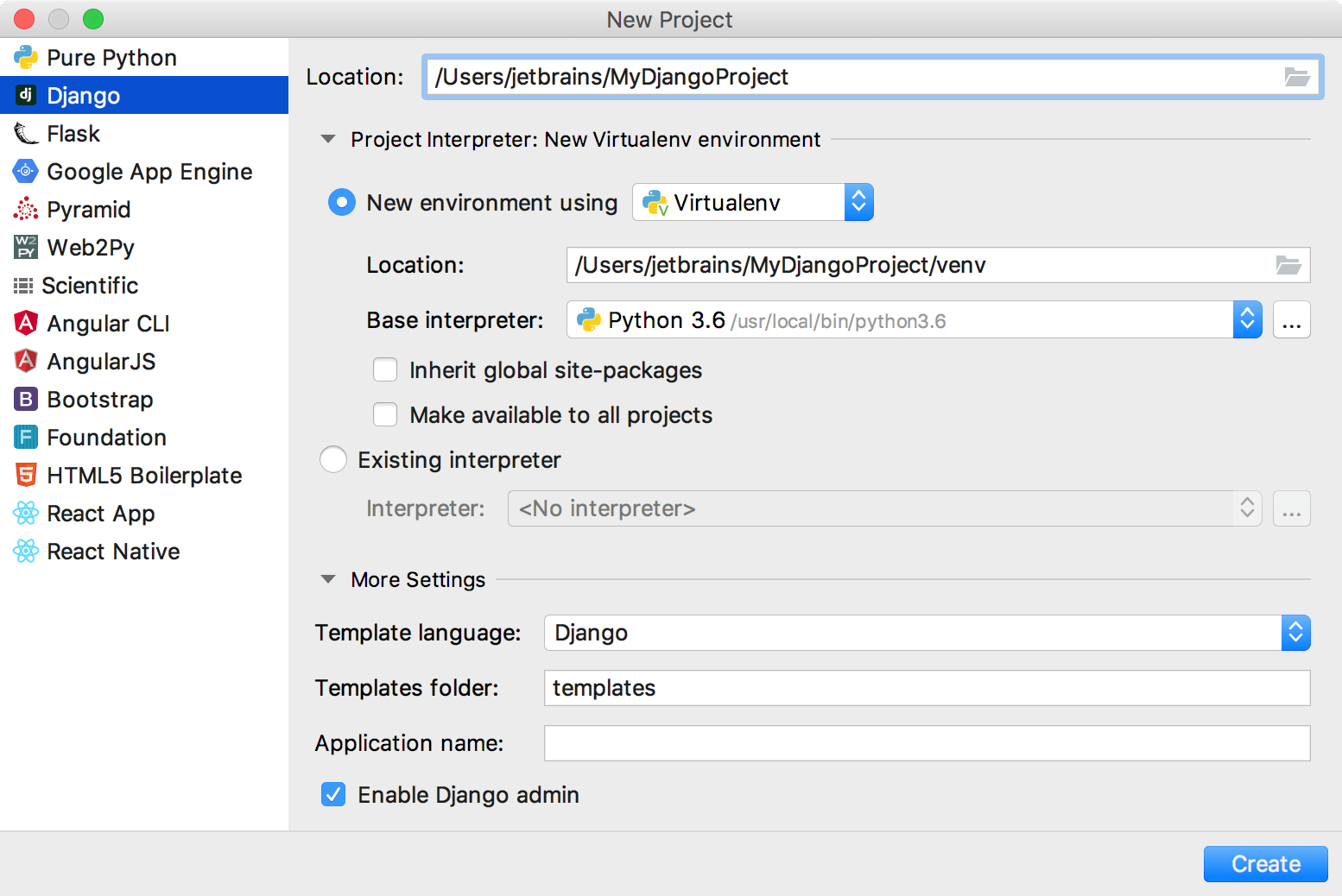Create a Django project
Django project is intended for productive web development with Django. PyCharm takes care of creating specific directory structure and files required for a Django application, and providing the correct settings.
To create a Django project
From the main menu, choose , or click the New Project button in the Welcome screen. New Project dialog opens.

-
In the New Project dialog, do the following:
Specify project type Django.
Specify project location.
-
Next, click
 to expand the Project Interpreter node, and select the new environment or existing interpreter, by clicking the corresponding radio-button.
to expand the Project Interpreter node, and select the new environment or existing interpreter, by clicking the corresponding radio-button.The following steps depend on your choice:
-
New environment using: if this option has been selected, choose the tool to be used to create a virtual environment. To do that, click the list and choose Virtualenv, Pipenv, or Conda.
Next, specify the location and base interpreter of the new virtual environment. If necessary, click the Inherit global site-packages and Make available to all projects check boxes.
When you configure a project Python interpreter, you need to specify the path to the Python executable in your system. So, before configuring a project interpreter, you need to ensure that you've downloaded Python and installed it in your system and you're aware of a path to it. You can create several project interpreters based on the same Python executable. This is helpful when you need to create different virtual environments for developing different types of applications. For example, you can create one virtual environment based on Python 3.6 to develop Django applications and another virtual environment based on the same Python 3.6 to work with scientific libraries.
Existing interpreter: if this option has been selected, choose the desired interpreter from the list, or (if the desired interpreter is not found), click
 and choose the interpreter. See Configure a Python interpreter for details.
and choose the interpreter. See Configure a Python interpreter for details.
-
-
Click
 (More Settings), and specify the following:
(More Settings), and specify the following: -
The Django application name.
From the list, select the template language to be used.
In the Templates folder field, specify the directory where the templates will be stored, and where they will be loaded from. You can specify the name of the directory that doesn't yet exist; in this case, the directory will be created.
If necessary, select the checkbox Enable Django admin. When this checkbox is selected, the automatic admin interface is created.
-
Click Create.